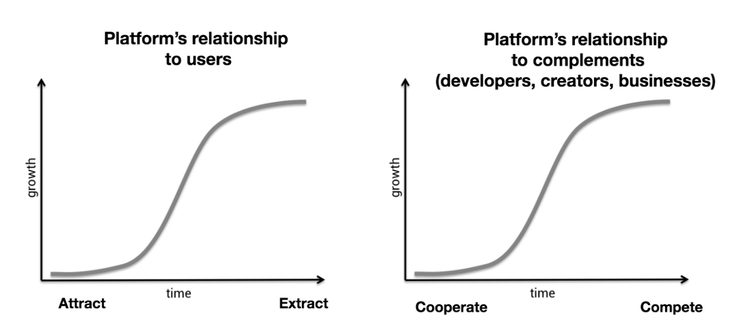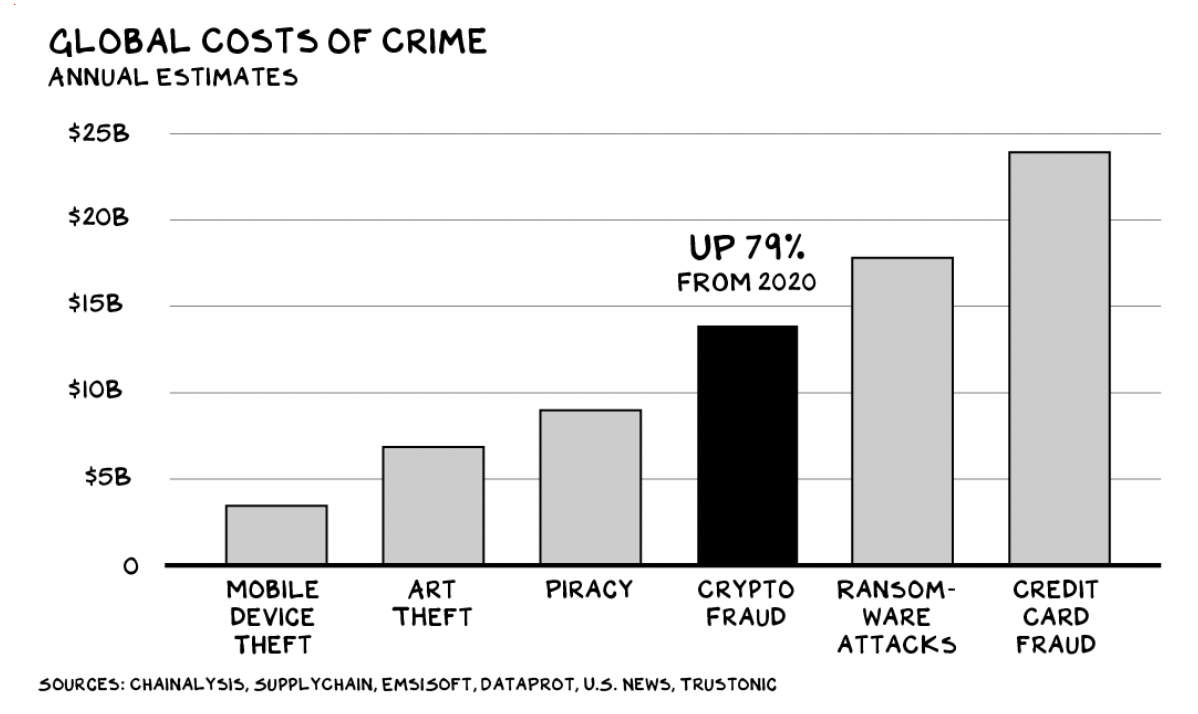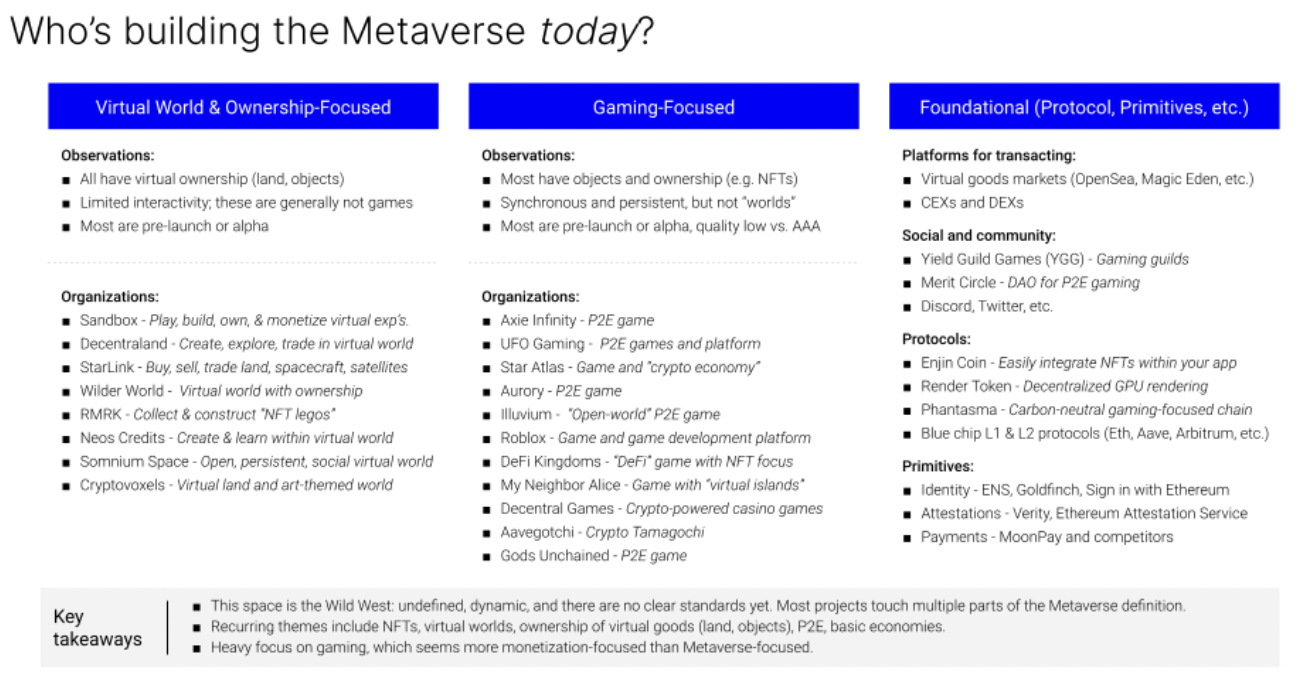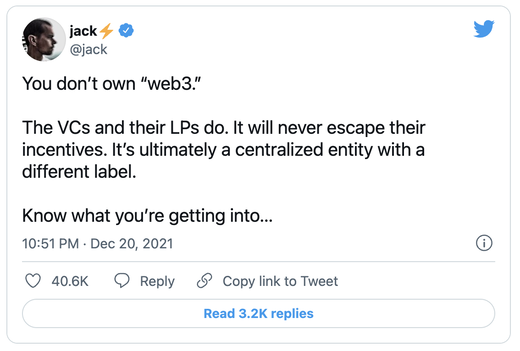|
The entire Wikipedia entry for Web3 is being considered for deletion by moderators due to the general lack of clarity on what Web3 actually is. Indeed, it took me several days of reading Web3 silicon valley articles and podcasts, and contrasting them with other reputable analyses, to piece it together.
This post cuts out the jargon and summarizes in plain language what Web3, NFTs, and the Metaverse are, how they're tied together, as well as the known issues of the technology and business model behind them. SILICON VALLEY'S NEW TARGET MARKET: CREATORS
Creators are people who build audiences online and find a way to make money from those audiences. This includes artists, musicians, bloggers, TikTok video stars, app developers, Instagram influencers, Etsy craftspeople, and the list goes on. They're the young, digital natives who are trying to make a living from their social media work.
Some creators already make millions per year, and many more are drawn to the idea that they might at least be able to make a living from their online creations. NY Times article Hello, Content Creators. Silicon Valley’s Investors Want to Meet You sums it up: Big Silicon Valley investors increasingly see creators as the next financial vein to be tapped on the internet." THE PROBLEM CREATORS FACE (ACCORDING TO SILICON VALLEY VCs)This narrative appears over and over:
These Big Tech companies of Web2 grew on the backs of creators and their content. At first they offered fair terms to creators, helping them reach audiences and monetize their content more easily than in Web1. But over time the Big Tech firms became monopolies and changed the rules on creators. From Chris Dixon, general partner at a16z who leads VC evangelism for all things Web3: In Web2 it became much harder for startups, creators, and other groups to grow their internet presence without worrying about centralized platforms changing the rules on them, taking away their audiences and profits. This in turn stifled innovation, making the internet less interesting and dynamic [...]"
When they are first getting started, platforms provide incentives for creators to sign up and contribute. Then as those platforms take off, they change the rules. Facebook and Twitter encouraged 3rd party app developers in their early days, then changed the rules, effectively kicking many of the developers' apps off the platform. Today Facebook and Twitter make money from creators posting content, but creators don't get a cut. Youtube started as a community space, now Youtube takes 50%. iOS and Android take a 30% tax, reject apps for seemingly arbitrary reasons, and subsume the functionality of 3rd-party apps at will. Google changes its search algorithm constantly, putting creators' personal and small business pages out of business overnight. Spotify reportedly takes 90% of the revenue made on the platform, while only 14,000 of the 8M artists make any money from the platform at all.
Of course, this view is one-sided and assumes the Big Tech platforms are just "middle men" that don't provide any value. People who remember the days of Web1 might remember that it was not easy to find things. AltaVista and Ask Jeeves were not always great at uncovering relevant web sites and were notoriously easy for spammers to game. Today Google, for all their shortcomings, offers a real service in keeping their search algorithm relevant. Social media platforms offer a helpful moderation service when they de-platform propaganda and conspiracy theorists. And many, many creators have built followings and businesses from these platforms, even if they aren't compensated by the platforms directly.
There is validity to the idea that Big Tech has too much power over creators. Some companies like Patreon (now valued at $4B), Kickstarter, Substack, OnlyFans, even TikTok have done well by offering services to creators that give them more control and an arguably fairer shot at making a living. But Dixon argues that as those platforms become more dominant, they too will change the rules on their members WEB3: A RETURN TO WEB1 NOSTALGIA (THANKS TO CRYPTO?)
"Web3" is a new term that has vaguely come to mean a return to the nostalgic memory of Web1, when creators were not at the mercy of Big Tech social media platforms.
Are successes like Patreon and Substack considered Web3? Not really. Silicon Valley would call them "gateway" platforms. The idea is that even though they may be focused on providing better offers to creators than their Big Tech counterparts, they too could "change the rules" on creators later on as they become monopolies. The only way to prevent this and truly achieve Web3 is through decentralization using blockchain and smart contracts technology. In essence: creators could create everything - digital art, music, blog posts, tweets, apps - in the form of NFTs . NFTs are blockchain objects that have special properties:
In effect, Dixon says, what NFTs allow is to introduce strong property rights onto the internet. In Web3, everything you see, hear and interact with - images, articles, apps, tweets - are owned by someone and have a smart contract behind them driving royalties and payments behind the scenes. The benefit of owning and monetizing every piece of the internet depends on who you ask (and their economic and political leanings). Web3 acolytes say this will allow creators to be more fairly compensated for the success of their work and own a stake in new online communities. New platforms would emerge that displace the old Big Tech platforms because they offer better terms to creators that are guaranteed not to change because they are baked into immutable smart contracts. And it provides fans, communities, and investors an opportunity to invest in NFTs and DAO communities of all kinds to help them flourish. BLOCKCHAIN TECHNOLOGY HAS FLAWS...
Known problems with blockchain technology today:
...AND IS RAMPANT WITH SCAMS
Another obvious problem with Web3 being based on cryptocurrencies is that they are speculative assets that many have likened to MLMs. Creators getting paid in crypto tokens only makes sense if they can count on the tokens being worth something.
Unsurprisingly, the biggest deterrent to adoption of the technology is the sheer number of scams related to crypto, NFTs, and other blockchain-based products that are reported regularly. The tongue-in-cheek website Web3 is Going Just Great documents the most egregious of these high-profile scams. But Web3 proponents argue that all technologies have flaws in their early stages. Chris Dixon asks podcast listeners to think of flat-screen TVs when they first came out - they had flaws and eventually the technology improved - and so it will be with blockchain. It's not clear however if blockchain technology can overcome these flaws, particularly as some such as the slow transaction rate are not a bug but a feature of the technology by design. WHAT IS THE METAVERSE AND HOW DOES IT FIT INTO WEB3?
The "metaverse" generally refers to shared virtual world environments which people can access via the internet, enhanced by virtual reality (VR) or augmented reality (AR). Second Life was an early metaverse that was popular for a time, where a user could design and control an avatar of themselves in a virtual world. They could interact with other people's avatar. And they would pay for virtual accessories like a house and clothes. Some video games have similar metaverses today.
The accelerated interest in the metaverse can be seen as a result of the COVID-19 pandemic. As more people have started working and going to school remotely, there has been increased demand for ways to make online interaction more lifelike. In the Web3 vision, the metaverse could be based on NFTs and blockchain-based cryptocurriences, where every item in the virtual world is an NFT that someone owns - your avatar, your avatar's clothes, the house you live in, the virtual land the house sits on, and so forth. For example, Metaverse real estate agents are already looking to sell you virtual land! Just as newcomers to North America in past centuries purchased and speculated on parcels of land, the metaverse promises a new frontier where platforms like Decentraland and The Sandbox allow people to purchase virtual parcels of land with crypto tokens, and build their own environments. In the Web3 world where everything on the internet is an NFT that's owned and transacted, the metaverse seems like a natural extension. Creators could design and sell all number of virtual accessories and tools to metaverse users. Users could buy them directly for their avatars, or investors could buy them for speculation. And all transactions are happening using crypto tokens, which themselves are speculative assets. The very idea of the Metavision has spawned a whole economy of companies rushing to create tools for the metaverse, as illustrated in How Coinbase Thinks About The Metaverse.
But much like blockchain technology, VR and AR technology is still very far off from realizing the vision of a truly immersive world.
EVEN IF THE TECHNOLOGY WORKED - WOULD THIS ACTUALLY HELP CREATORS?
As I write this today, Jack Dorsey from Twitter - himself a cryto fan - posted:
This seems to be saying out loud what many people are thinking. Imagine privatizing every bit of the entire internet, including the future metaverse, into NFT units where every tweet, every graphic, every app is a private asset, a transaction, and an opportunity for speculation. Even the tokens that are used as a medium of exchange for these private assets are themselves assets for further speculation. Would this hyper-capitalist vision of the internet really benefit creators and the public at large? Or would it be an opportunity for VCs and Big Tech to ultimately own more of the internet and make it even more restrictive than it is today?
Is smart contract technology really the missing ingredient that will level avoid big platforms and other middle men taking advantage of creators? Or are contract negotiations always going to be subject to imbalances of power between a big aggregator and a small creator, regardless of whether the contracts can be programmed and immutable? Putting aside the limitations of the technology and the present-day scams, there are some serious concerns about the vision itself. Big Tech monopolies have a lot of known issues, and it seems that creators could be better served by new tools like Patreon and whatever other new tools naturally emerge to serve them. Whether these tools need to be provided by a blockchain and crypto-based Web3 is dubious.
2 Comments
1/30/2022 12:14:07 pm
I recently got my interest in meta and virtual reality world. And really found your article helpful for me as a beginner. Helped alot Thanks
Reply
2/18/2022 01:51:23 pm
AltaVista and Ask Jeeves were not always great at uncovering relevant web sites and were notoriously easy for spammers to game. Thank you for taking the time to write a great post!
Reply
Your comment will be posted after it is approved.
Leave a Reply. |





